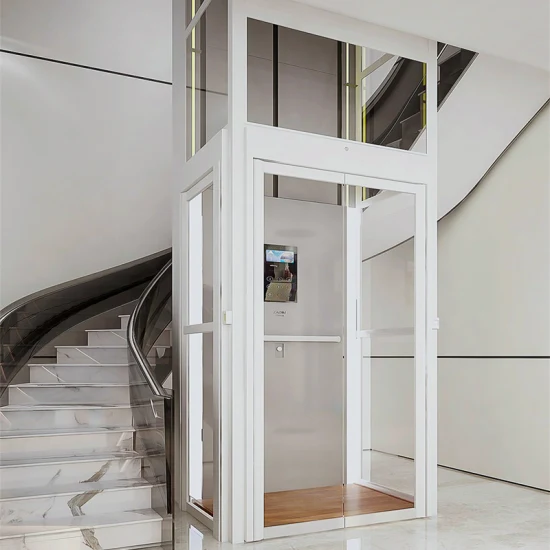London Lift Company: Giving Comprehensive Lift Solutions Across the Capital
London Lift Company: Giving Comprehensive Lift Solutions Across the Capital
Blog Article
Looking Into the World of Lifts: Common Concerns Faced by Different Lift Mechanisms
As we navigate through the vertical transportation systems of modern buildings, lifts stand out as a vital component of our everyday lives. From hydraulic elevators to grip systems and machine-room-less designs, each lift type comes with its set of typical concerns.
Hydraulic Elevators
Hydraulic lifts, typically chosen for low-rise structures, make use of fluid stress to manage the activity of the lift automobile (lift repair companies). This mechanism includes a hydraulic pump pushing oil into a cylinder, causing the lift to relocate in the preferred instructions. While hydraulic lifts are recognized for their silent and smooth procedure, they do come with their very own set of usual issues
One prevalent problem with hydraulic elevators is oil leak. The seals in the hydraulic system can break in time, bring about oil seepage. This not just creates a mess however can likewise impact the elevator's efficiency if left unaddressed. Additionally, concerns with the control system, such as malfunctioning valves or a malfunctioning pump, can trigger disruptions in the elevator's activity.
Normal maintenance and timely repair work are important to make sure the smooth functioning of hydraulic elevators. By attending to these common problems proactively, building owners can minimize downtime and make sure the safety and security and efficiency of their vertical transport system.
Grip Lifts
When taking into consideration upright transportation systems in structures, an additional typical type apart from hydraulic elevators is the grip lift. Grip elevators operate using a system of ropes and weights that move the lift cars and truck by clutching onto the hoist ropes. This mechanism permits smoother and faster vertical transport compared to hydraulic systems.
One of the typical issues encountered by grip lifts is rope wear. The continuous activity of the ropes within the grip system can lead to damage over time, potentially causing the lift to malfunction or become hazardous for use. Normal examinations and maintenance of the ropes are necessary to ensure the lift's appropriate functioning and security.
An additional concern that traction elevators may experience is connected to the control system. Troubles with the control system can bring about concerns such as unpredictable movement, delays in feedback times, or even full shutdowns. Routine testing and maintenance of the control system are crucial to stop such concerns and make certain the elevator's dependability.
Machine-Room-Less (MRL) Elevators

One of the key components of MRL lifts is the portable gearless traction device that is mounted within the hoistway. This equipment successfully drives the lift vehicle without the requirement for bulky equipment discovered in traditional grip lifts. Additionally, MRL lifts normally utilize a weight system to stabilize the auto, further boosting their power efficiency.
Regardless of their benefits, MRL elevators may face challenges connected to repair and maintenance because of the constrained room for devices installation. Availability for servicing parts within the shaft can be limited, needing specialized training for specialists. Correct maintenance routines and normal assessments are important to make sure the continued smooth operation of MRL elevators.
Overloading and Weight Limit Issues
Overloading and weight limitation problems are important issues in elevator operations. Lift manufacturers style raises with details weight abilities to guarantee traveler security and equipment long life.
When elevators are overwhelmed, it places too much stress on the motor, cable televisions, and various other parts, possibly triggering malfunctions or malfunctions. Security devices such as sensors and overload sensing units are in area to stop lifts from moving if they discover excess weight. Additionally, going beyond weight limits can result in increased energy lift repair near me consumption and wear and tear on the elevator system.
To minimize straining concerns, developing managers ought to prominently display weight restrictions in lifts and enlighten occupants on the significance of sticking to these constraints - lift repair companies. Routine upkeep checks by certified service technicians can likewise help ensure that lifts are operating within safe weight specifications. By attending to overloading and weight limit concerns proactively, structure proprietors can enhance elevator safety and effectiveness
Electrical System Failures
Going beyond weight limits in lifts can not just lead to mechanical issues however additionally possibly contribute to electric system failings within the lift infrastructure. Electrical system failings are an important worry in lift procedure, as they can lift repair near me trigger unanticipated shutdowns, malfunctions, or also safety dangers.
Regular maintenance and inspections are vital to determine and address prospective electric problems immediately, guaranteeing the reliable and safe procedure of elevator systems. By adhering to weight restrictions and carrying out routine electric system checks, building owners can reduce the risk of electrical failures in lifts.
Verdict

Hydraulic lifts, frequently preferred for low-rise structures, utilize fluid stress to manage the activity of the lift cars and truck.When taking into consideration upright transport systems in buildings, one more typical kind aside from hydraulic lifts is the traction elevator. Traction elevators operate using a system of ropes and counterweights that move the lift automobile by gripping onto the hoist ropes. Unlike traditional lifts that need a separate equipment space to house the equipment, MRL elevators integrate most of the elements within the shaft, getting rid of the requirement for a dedicated equipment space.In final thought, elevators deal with usual issues such as we maintain lifts hydraulic breakdowns, grip system failures, and electrical system problems.
Report this page